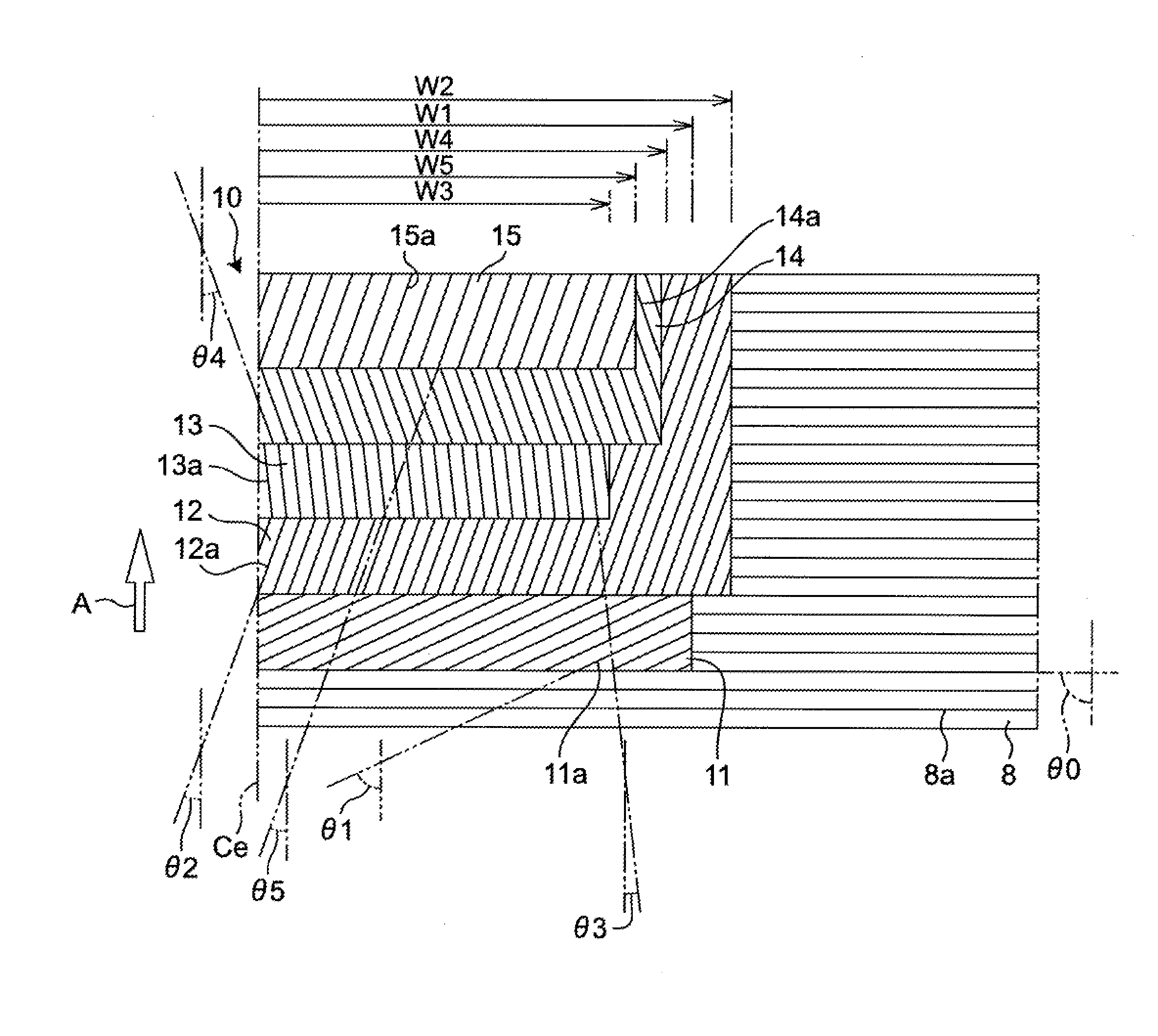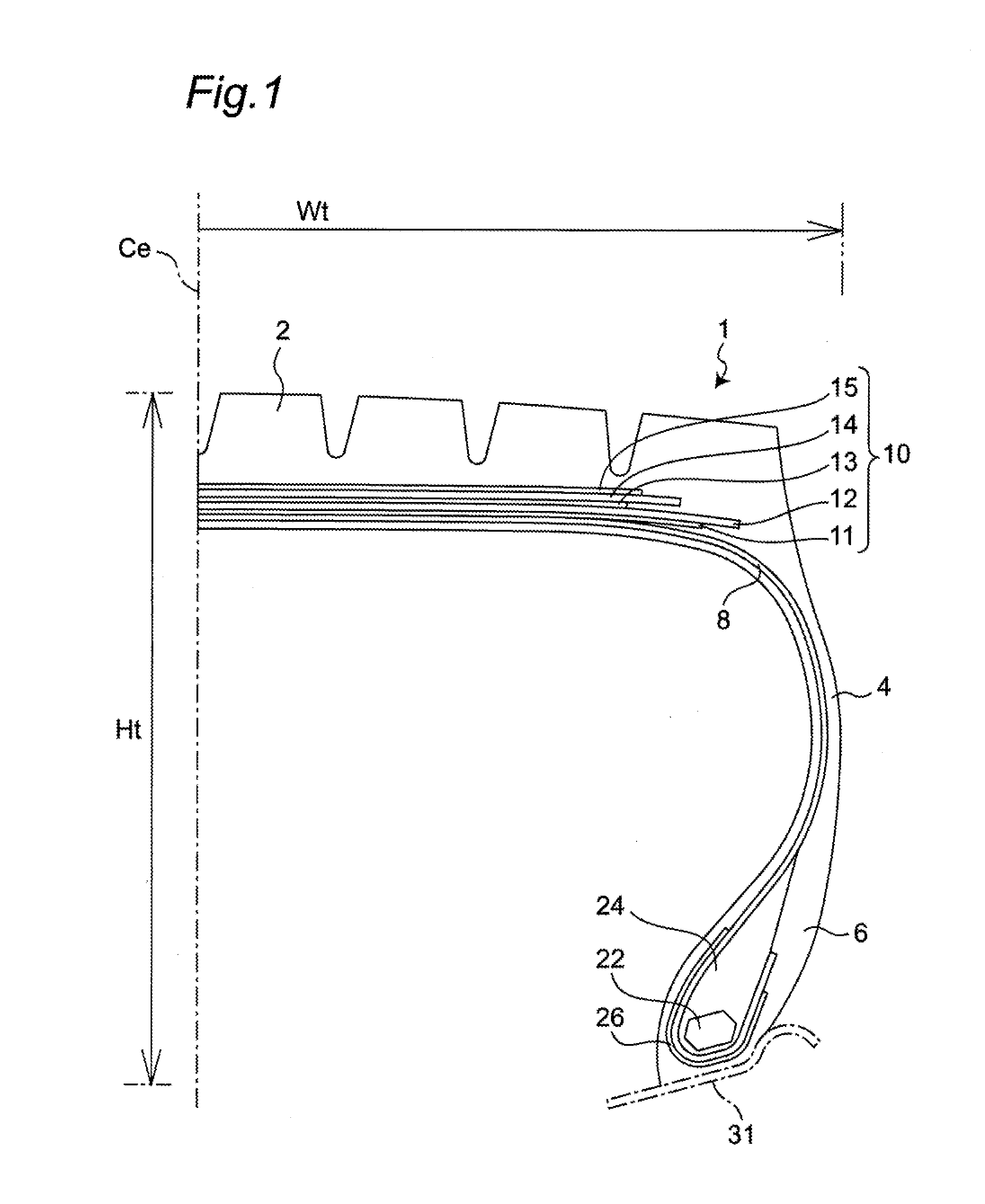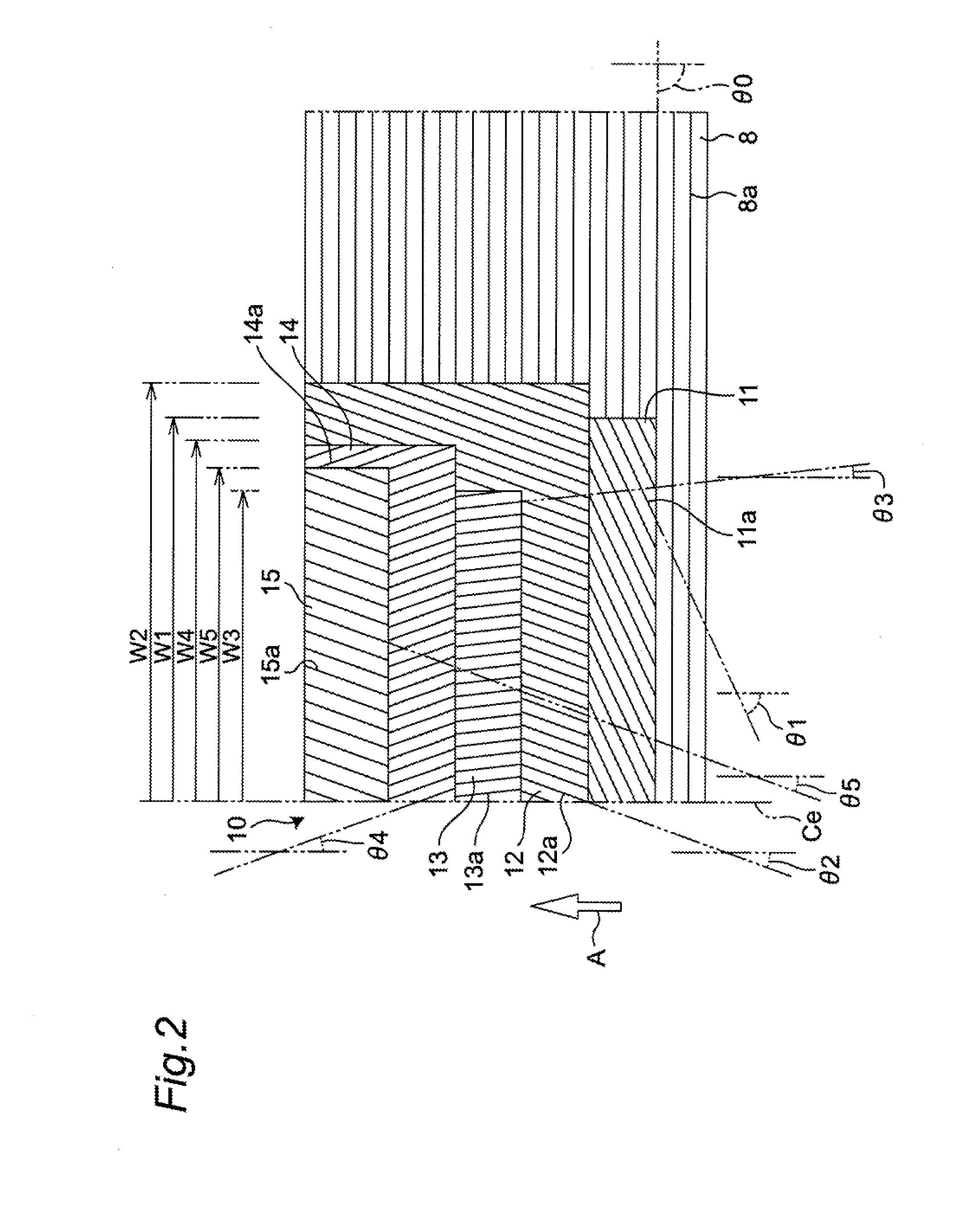Pneumatic tire
a technology of pneumatic tires and bead portions, which is applied in the direction of heavy-duty vehicles, vehicle components, vehicles, etc., can solve the problems of reducing the resistance to wear, promoting an increased tendency of tire deformation in the tire-width direction, and increasing the distortion of the bead portion, so as to achieve enhanced bead durability
- Summary
- Abstract
- Description
- Claims
- Application Information
AI Technical Summary
Benefits of technology
Problems solved by technology
Method used
Image
Examples
examples
[0055]Tires according to Comparative Examples 1 to 5 and tires according to Examples 1 to 4 shown in the following Table 3 were subjected to an evaluation test performed for evaluating belt durability and bead durability. Assume that data which are not described particularly hereinafter are shared in common by the tires according to Comparative Examples 1 to 5 and the tires according to Examples 1 to 4. Particularly, in all of Comparative Examples 1 to 5 and the tires according to Examples 1 to 4, a tire size is set to 445 / 50R22.5.
TABLE 3ComparativeComparativeComparativeComparativeComparativeExample 1Example 2Example 3Example 4Example 5NoteNoReinforcementCord angleCord angle Width W3reinforcementbelt extending in θ3θ3excessivelybeltcircumferentialexcessivelyexcessivelysmall(FIG. 5)directionsmalllargeCord angle θ3—05107(degrees) ofreinforcementbeltWidth W3 of—290290290180reinforcementbelt(mm)W3 / Wt*100(%)—66666641Belt durability10013012710590Bead durability10090100120100Example 1Examp...
PUM
 Login to View More
Login to View More Abstract
Description
Claims
Application Information
 Login to View More
Login to View More - R&D
- Intellectual Property
- Life Sciences
- Materials
- Tech Scout
- Unparalleled Data Quality
- Higher Quality Content
- 60% Fewer Hallucinations
Browse by: Latest US Patents, China's latest patents, Technical Efficacy Thesaurus, Application Domain, Technology Topic, Popular Technical Reports.
© 2025 PatSnap. All rights reserved.Legal|Privacy policy|Modern Slavery Act Transparency Statement|Sitemap|About US| Contact US: help@patsnap.com



